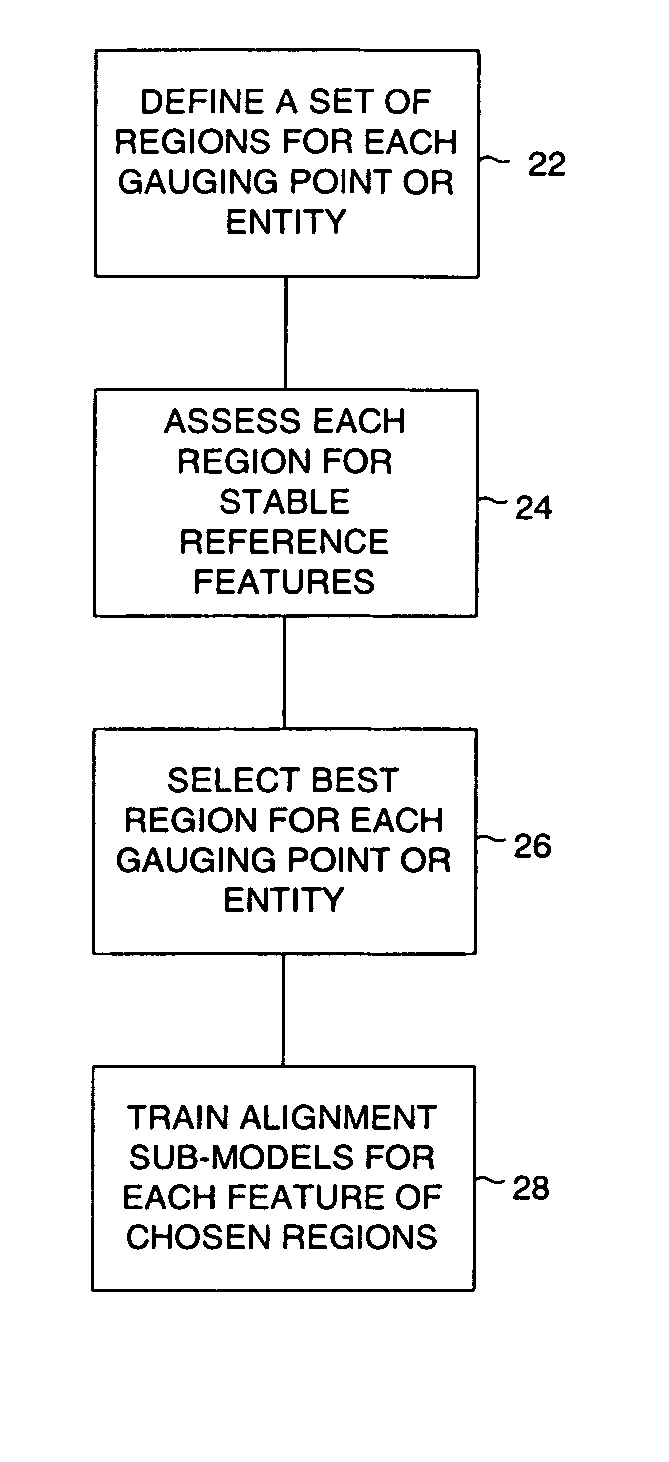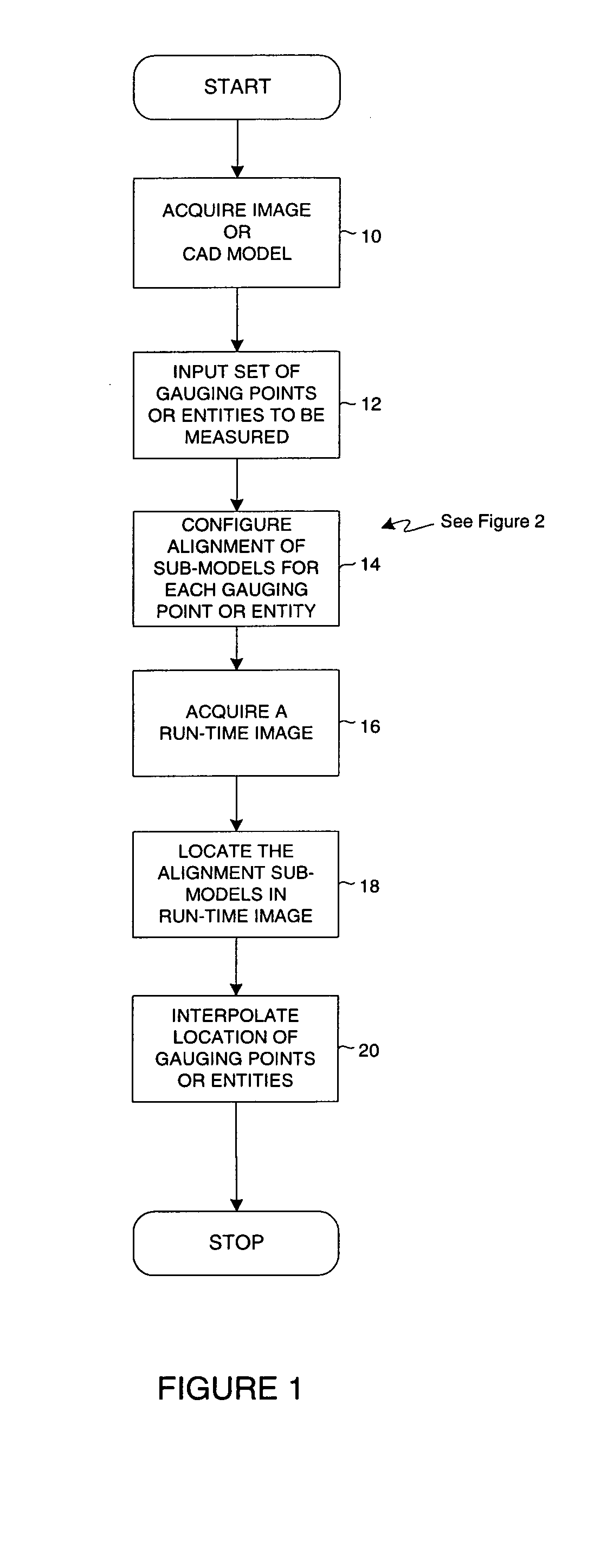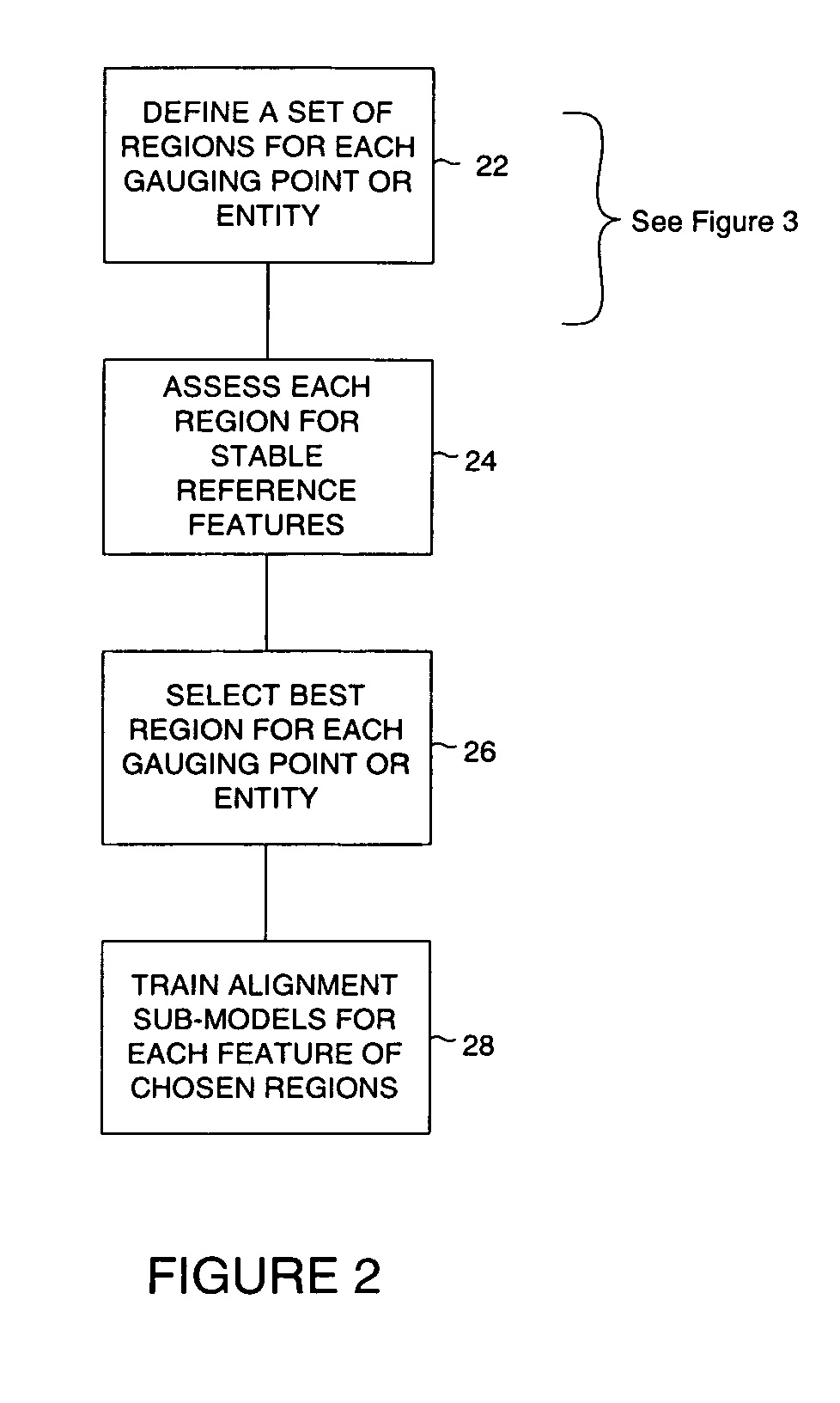Gauging based on global alignment and sub-models
a global alignment and sub-model technology, applied in adaptive control, process and machine control, instruments, etc., can solve the problems of severely limited range of potential applications for blob analysis, impracticality of subpixel accuracy, and inability to apply subpixel accuracy, so as to reduce the workload of operators
- Summary
- Abstract
- Description
- Claims
- Application Information
AI Technical Summary
Benefits of technology
Problems solved by technology
Method used
Image
Examples
Embodiment Construction
[0046]FIG. 1 illustrates the general steps performed to implement at least one embodiment of the invention. A model acquisition step 10 is first performed in which a training image is acquired or a CAD model is constructed. The training image or CAD model includes gauge points or entities whose location is to be measured. A model typically consists of a spatial arrangement of features that can be related in space to the gauge points or entities. The gauge points or entities may be points, lines or objects whose position is of interest to the user and which have positions that lie within the model. The gauge points or entities are defined by the user during a gauge entity definition step 12 which usually occurs at set up time or training time. The gauge entities can be selected, for example, by selecting points with the cursor in a graphical user interface.
[0047]A configuration of sub-models step 14 is then performed. During the configuration of sub-models step 14, sub-models or feat...
PUM
 Login to View More
Login to View More Abstract
Description
Claims
Application Information
 Login to View More
Login to View More - R&D
- Intellectual Property
- Life Sciences
- Materials
- Tech Scout
- Unparalleled Data Quality
- Higher Quality Content
- 60% Fewer Hallucinations
Browse by: Latest US Patents, China's latest patents, Technical Efficacy Thesaurus, Application Domain, Technology Topic, Popular Technical Reports.
© 2025 PatSnap. All rights reserved.Legal|Privacy policy|Modern Slavery Act Transparency Statement|Sitemap|About US| Contact US: help@patsnap.com



